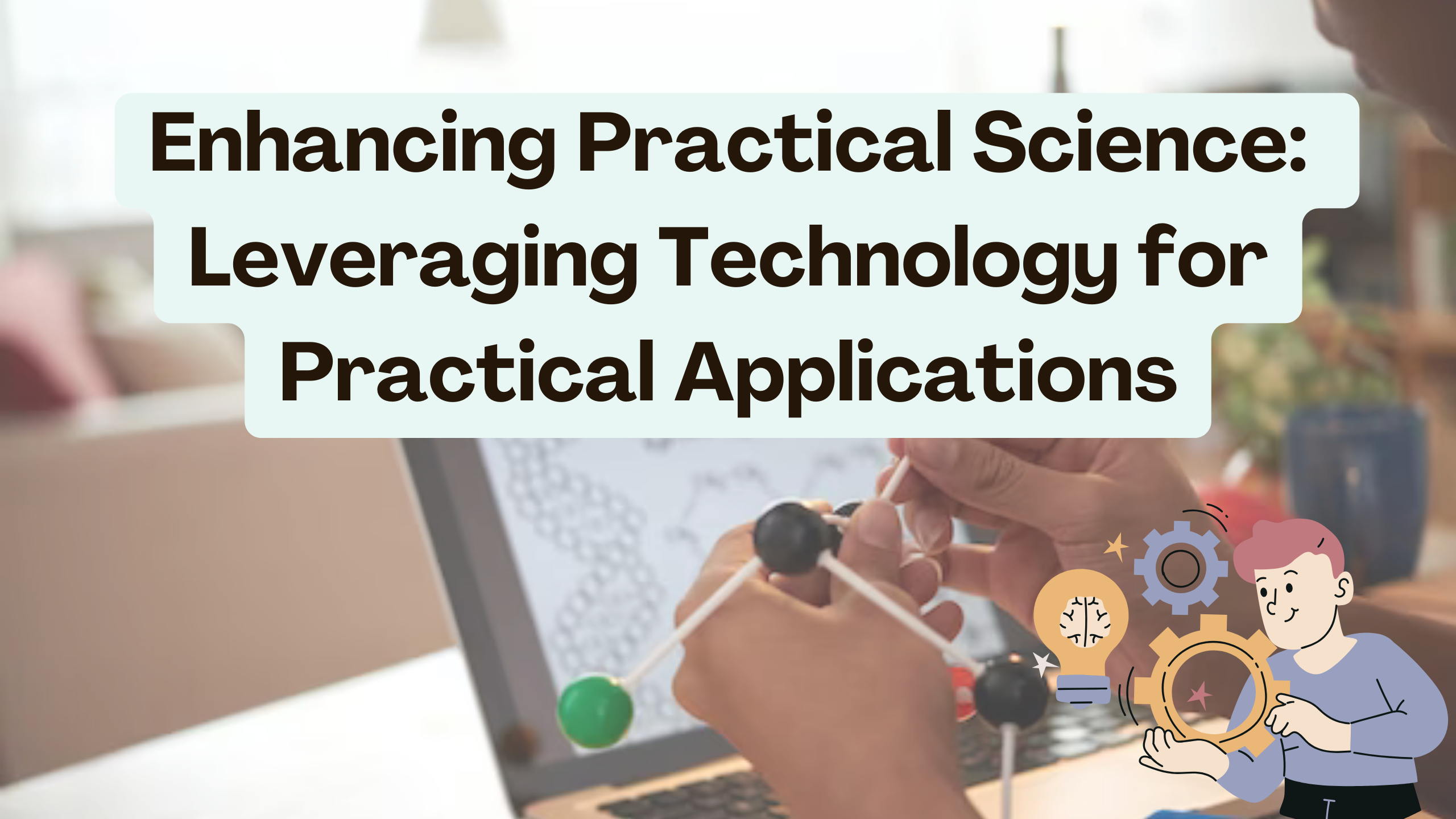Enhancing Practical Science: Leveraging Technology for Practical Applications
- AI Image Generators Software AI Writing Assistant Popular Tools AI Tools


Enhancing Practical Science: Leveraging Technology for Practical Applications
In the ever-evolving landscape of practical science, the marriage of scientific methodologies and cutting-edge technology opens up new frontiers of exploration and application. This comprehensive guide explores how various Software as a Service (SaaS) tools can contribute to enhancing practical science while also delving into the Web Accessibility Laws that professionals in 2022 should be aware of.
Leveraging SaaS Tools for Practical Science
1. Labguru
- Overview: Labguru is a comprehensive lab management solution designed to streamline laboratory operations and enhance collaboration among researchers.
- Features:
- Experiment management and tracking.
- Protocol organization and version control.
- Research data management for improved efficiency.
- Application: Ideal for academic institutions and research-focused organizations looking to optimize their lab workflows and data management.
2. ChemDraw
- Overview: ChemDraw is a powerful tool for chemists, allowing them to draw scientifically accurate chemical structures and reactions.
- Features:
- Intuitive chemical structure drawing.
- Dynamic chemical information labeling.
- Enhanced collaboration with cloud-based storage.
- Application: Beneficial for chemists and researchers needing a sophisticated platform for chemical structure representation.
3. Plotly
- Overview: Plotly is a data visualization tool that goes beyond static graphs, enabling the creation of interactive and shareable plots, graphs, and charts.
- Features:
- Dynamic and interactive data visualization.
- Collaborative platform for real-time insights.
- Integration with various programming languages.
- Application: Perfect for researchers and scientists aiming to present complex data in an engaging and interactive manner.
4. ELN by Labfolder
- Overview: Labfolder’s Electronic Lab Notebook (ELN) digitizes traditional lab notebooks, offering an efficient and secure platform for research data.
- Features:
- Cloud-based collaboration for remote teams.
- Integration with other lab management tools.
- Advanced data encryption for security.
- Application: Suited for research teams looking to transition to digital lab notebooks for improved organization and accessibility.
5. Mendeley
- Overview: Mendeley is a reference management tool that simplifies the organization and sharing of research references and citations.
- Features:
- Centralized reference library.
- Citation and document collaboration.
- Social networking for researchers.
- Application: Valuable for academics and researchers managing extensive reference libraries and collaborating on research papers.
Web Accessibility Laws You Should Know in 2022
As technology progresses, it’s imperative to stay abreast of the legal landscape, especially concerning web accessibility. In 2022, several laws aim to ensure that online content is accessible to individuals with disabilities, including those in the scientific community.
Web Content Accessibility Guidelines (WCAG)
- Overview: Developed by the World Wide Web Consortium (W3C), WCAG provides a set of guidelines to make web content more accessible for people with disabilities.
- Key Points:
- Covers a wide range of disabilities, including visual, auditory, cognitive, and motor impairments.
- Recommendations for making web content perceivable, operable, understandable, and robust.
- Widely adopted as a global standard for web accessibility.
Americans with Disabilities Act (ADA)
- Overview: Enacted in 1990, ADA prohibits discrimination against individuals with disabilities and ensures equal opportunities in various aspects of life, including digital access.
- Key Points:
- Applicable to public and private entities.
- Requires reasonable accommodations for individuals with disabilities.
- Courts interpret ADA to include digital accessibility.
Section 508 of the Rehabilitation Act
- Overview: Section 508 mandates that federal agencies’ electronic and information technology is accessible to people with disabilities.
- Key Points:
- Specific requirements for software, websites, and electronic documents.
- Applicable to federal agencies and organizations receiving federal funds.
- Ensures equal access to government information and services.
Conclusion
In conclusion, the integration of SaaS tools into practical science workflows brings forth a new era of efficiency and collaboration. From laboratory management to data visualization and reference organization, these tools empower scientists to focus on innovation rather than administrative tasks. Concurrently, staying informed about web accessibility laws ensures that scientific findings are disseminated inclusively.
Elevating Your SaaS Experience with Subscribed.FYI
As we delve into the world of practical science and SaaS tools, consider enhancing your SaaS experience with Subscribed.FYI. Our platform aspires to be the go-to solution for freelancers and small teams, providing a centralized space to understand, compare, and manage your SaaS stack effectively.
Unlock Secret Deals and Save Big
Sign up for free on Subscribed.FYI to unlock exclusive member-only deals that can save you over $100,000 per year on 100+ SaaS tools. Your secret deals are just a click away, providing added value to your scientific endeavors.
Embark on a journey of enhanced practical science with innovative SaaS tools and elevate your SaaS experience with Subscribed.FYI. Sign up today to unlock a world of possibilities in managing your scientific and SaaS stack effectively.
Relevant Links
Explore more about the discussed SaaS tools and web accessibility laws:
- Labguru
- ChemDraw
- Plotly
- ELN by Labfolder
- Mendeley
- Web Content Accessibility Guidelines (WCAG)
- Americans with Disabilities Act (ADA)
- Section 508 of the Rehabilitation Act
- Subscribed.FYI





